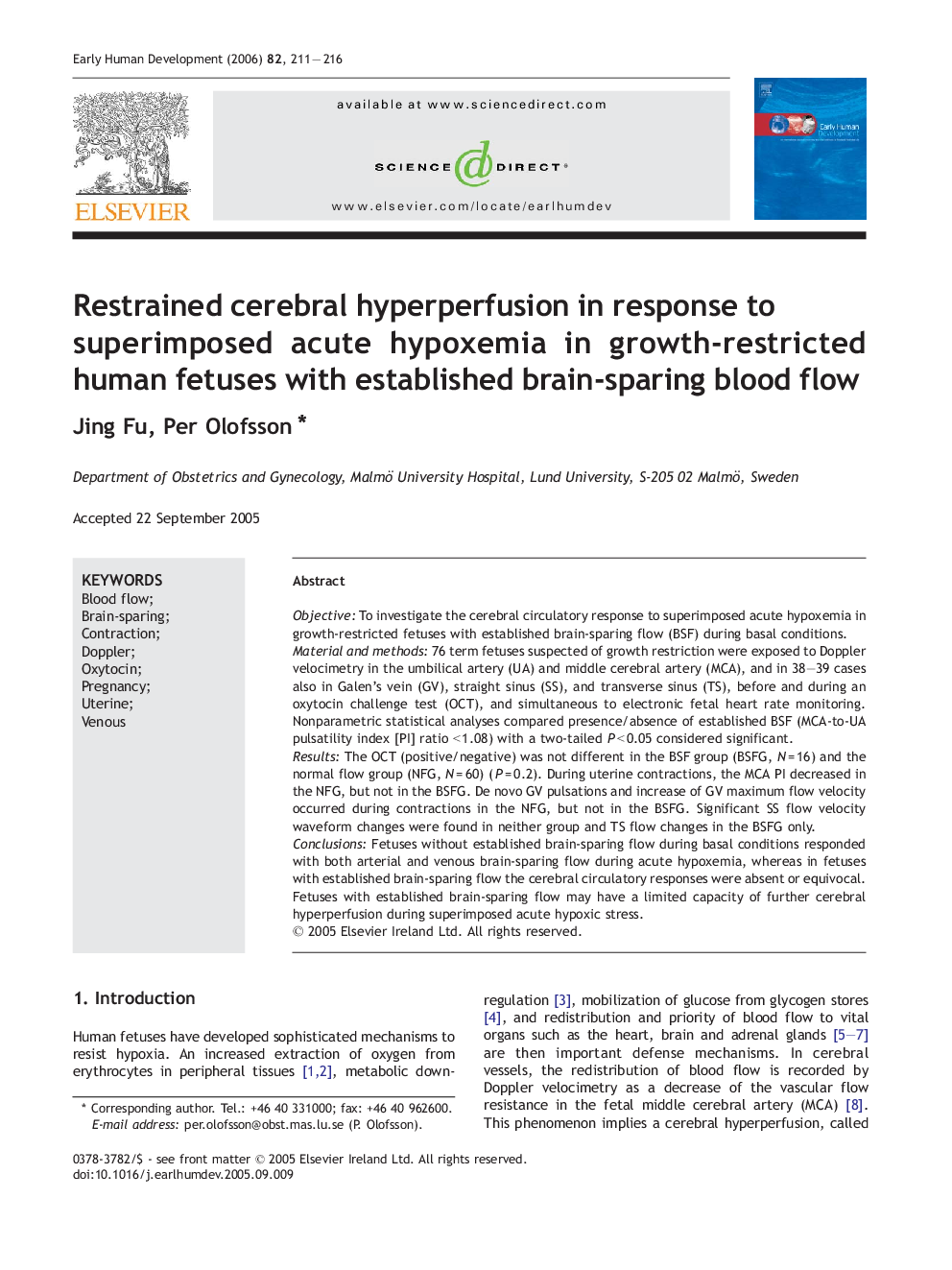| Article ID | Journal | Published Year | Pages | File Type |
|---|---|---|---|---|
| 3918420 | Early Human Development | 2006 | 6 Pages |
ObjectiveTo investigate the cerebral circulatory response to superimposed acute hypoxemia in growth-restricted fetuses with established brain-sparing flow (BSF) during basal conditions.Material and methods76 term fetuses suspected of growth restriction were exposed to Doppler velocimetry in the umbilical artery (UA) and middle cerebral artery (MCA), and in 38–39 cases also in Galen's vein (GV), straight sinus (SS), and transverse sinus (TS), before and during an oxytocin challenge test (OCT), and simultaneous to electronic fetal heart rate monitoring. Nonparametric statistical analyses compared presence/absence of established BSF (MCA-to-UA pulsatility index [PI] ratio < 1.08) with a two-tailed P < 0.05 considered significant.ResultsThe OCT (positive/negative) was not different in the BSF group (BSFG, N = 16) and the normal flow group (NFG, N = 60) (P = 0.2). During uterine contractions, the MCA PI decreased in the NFG, but not in the BSFG. De novo GV pulsations and increase of GV maximum flow velocity occurred during contractions in the NFG, but not in the BSFG. Significant SS flow velocity waveform changes were found in neither group and TS flow changes in the BSFG only.ConclusionsFetuses without established brain-sparing flow during basal conditions responded with both arterial and venous brain-sparing flow during acute hypoxemia, whereas in fetuses with established brain-sparing flow the cerebral circulatory responses were absent or equivocal. Fetuses with established brain-sparing flow may have a limited capacity of further cerebral hyperperfusion during superimposed acute hypoxic stress.
